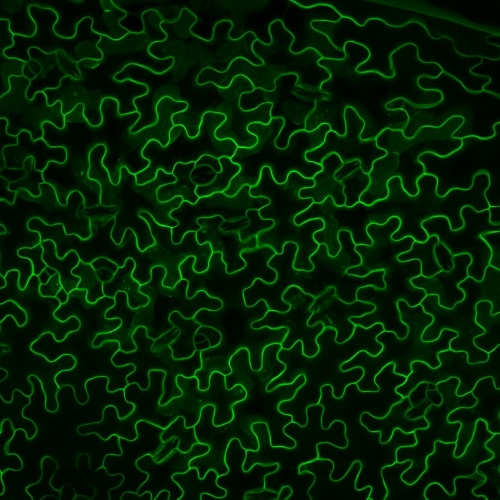研究成果 Research Results
- TOP
- News
- Research Results
- A Theoretical Model of Jigsaw-Puzzle Pattern Formation by Plant Leaf Epidermal Cells
A Theoretical Model of Jigsaw-Puzzle Pattern Formation by Plant Leaf Epidermal Cells
2016.04.11Research ResultsLife & Health
Plant leaf epidermal cells exhibit a jigsaw puzzle–like pattern that is generated by interdigitation of the cell wall during leaf development. The contribution of two ROP GTPases, ROP2 and ROP6, to the cytoskeletal dynamics that regulate epidermal cell wall interdigitation has already been examined; however, how interactions between these molecules result in pattern formation remains to be elucidated. Here, we propose a simple interface equation model that incorporates both the cell wall remodeling activity of ROP GTPases and the diffusible signaling molecules by which they are regulated.
This model successfully reproduces pattern formation observed in vivo, and explains the counterintuitive experimental results of decreased cellulose production and increased thickness. Our model also reproduces the dynamics of three-way cell wall junctions. Therefore, this model provides a possible mechanism for cell wall interdigitation formation in vivo.

Plant leaf epidermal cells exhibit a jigsaw puzzle–like pattern
Researcher comments
It is well known that plant epidermal cells show beautiful jigsaw-puzzle like pattern. However, mechanism of this pattern formation is not well understood. In this study, we integrated known experimental information and mathematical modeling to reproduce the main features of the pattern formation—maintenance of cell wall thickness and formation of interdigitation. Interestingly, the model is mathematically equivalent to the model of human skull suture interdigitation.
Journal Reference
A Theoretical Model of Jigsaw-Puzzle Pattern Formation by Plant Leaf Epidermal Cells ,PLoS Computational Biology, ,PLoS Computational Biology, 10.1371/journal.pcbi.1004833Research-related inquiries
- TOP
- News
- Research Results
- A Theoretical Model of Jigsaw-Puzzle Pattern Formation by Plant Leaf Epidermal Cells































